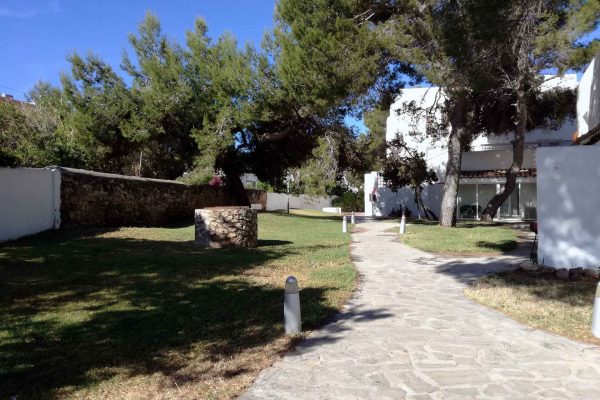Ibiza is an island with a double soul: the summer, unrestrained, dedicated to excesses, which has made it famous in the last 40 years; and the more relaxed, peaceful one that takes great care of the traditions and the surrounding environment. The latter inevitably emerges more in the rest of the year even if, in hindsight, the two identities also coexist in the chaotic summer months. It's just a matter of having the kind of vacation you want in mind and adjusting accordingly. Below we will try to take both aspects into account also because, the "monstrous" numbers of the turnout (permanently in the order of several million visitors per year), are explained only considering the tourist offer as a whole. In short, Ibiza is one of the few tourist resorts that really can offer (almost) everything to everyone: transgression, relaxation, discos, excursions, seafood, land cuisine, cocktails on the beach, fine wines and much, much more. Enjoy the reading.
- Dalt Vila
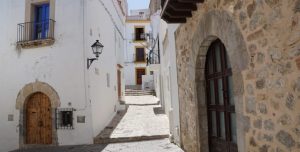 Nine times out of ten the visit to the island starts from the old part of Eivissa, as the inhabitants call in Catalan the capital Ibiza which also gives the island its name.. Dalt Vila, a UNESCO World Heritage Site since 1999, is a perfect compendium of that double soul to which we referred at the beginning. It is, in fact, a large open-air museum which, however, in the summer is literally invaded by tourists walking through the maze of narrow streets in the area. Obviously there is no shortage of bars, restaurants and shops, just as there is no shortage of street artists and eccentric dressed characters that in Ibiza, in truth, abound. Really many things to see. We point out the Arab Castle, the Cathedral Nostra Senyora De Las Neus, the Museum of Contemporary Art and Placa des Amparats from which you can see a beautiful view of the city harbor. Be careful, therefore, not to forget the camera.
Nine times out of ten the visit to the island starts from the old part of Eivissa, as the inhabitants call in Catalan the capital Ibiza which also gives the island its name.. Dalt Vila, a UNESCO World Heritage Site since 1999, is a perfect compendium of that double soul to which we referred at the beginning. It is, in fact, a large open-air museum which, however, in the summer is literally invaded by tourists walking through the maze of narrow streets in the area. Obviously there is no shortage of bars, restaurants and shops, just as there is no shortage of street artists and eccentric dressed characters that in Ibiza, in truth, abound. Really many things to see. We point out the Arab Castle, the Cathedral Nostra Senyora De Las Neus, the Museum of Contemporary Art and Placa des Amparats from which you can see a beautiful view of the city harbor. Be careful, therefore, not to forget the camera.
- Port of Eivissa
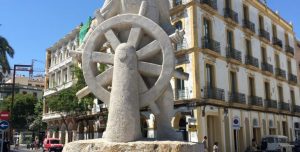 Dopo Dalt Vila tocca alla zona del Porto, un altro di quei luoghi dove storia e divertimento si fondono. Storici sono i quartieri de La Marina e Sa Penya, antichi villaggi di pescatori, oggi luoghi preferiti dai turisti che solitamente trascorrono in zona il preserata in attesa dell’ingresso in discoteca (famosissima la discoteca “Pacha”). Storici anche i due monumenti dedicati ai marinai che nei secoli hanno reso grande Ibiza. Stiamo parlando del Monument a los Corsarios, e l’altro intitolato alla Gente de la Mar (vd. foto). Il primo si trova alle spalle dell’Estacio Marittima dove attraccano le navi da crociera e i traghetti provenienti da Barcellona, Valencia o dalla vicina Formentera. Il secondo, invece, si trova all’incrocio di Avinguda de Santa Eularia des Riu, una delle arterie principali dell’isola. Da non dimenticare Eivissa Nova e Marina Botafoc i due porti turistici dove generalmente attraccano i tanti vip del mondo dello sport e dello spettacolo che frequentano Ibiza nei mesi estivi. Sono questi i posti dove si fa lo struscio con la speranza di fotografare qualcuno/a dei protagonisti dello star system. Per il resto, il porto è un susseguirsi di bar, ristoranti, boutique e negozi di souvenir pronti a reggere l’impatto giornaliero con migliaia di visitatori, tra i tanti in vacanza e quelli, altrettanto numerosi, che sbarcano dalle navi da crociera.
Dopo Dalt Vila tocca alla zona del Porto, un altro di quei luoghi dove storia e divertimento si fondono. Storici sono i quartieri de La Marina e Sa Penya, antichi villaggi di pescatori, oggi luoghi preferiti dai turisti che solitamente trascorrono in zona il preserata in attesa dell’ingresso in discoteca (famosissima la discoteca “Pacha”). Storici anche i due monumenti dedicati ai marinai che nei secoli hanno reso grande Ibiza. Stiamo parlando del Monument a los Corsarios, e l’altro intitolato alla Gente de la Mar (vd. foto). Il primo si trova alle spalle dell’Estacio Marittima dove attraccano le navi da crociera e i traghetti provenienti da Barcellona, Valencia o dalla vicina Formentera. Il secondo, invece, si trova all’incrocio di Avinguda de Santa Eularia des Riu, una delle arterie principali dell’isola. Da non dimenticare Eivissa Nova e Marina Botafoc i due porti turistici dove generalmente attraccano i tanti vip del mondo dello sport e dello spettacolo che frequentano Ibiza nei mesi estivi. Sono questi i posti dove si fa lo struscio con la speranza di fotografare qualcuno/a dei protagonisti dello star system. Per il resto, il porto è un susseguirsi di bar, ristoranti, boutique e negozi di souvenir pronti a reggere l’impatto giornaliero con migliaia di visitatori, tra i tanti in vacanza e quelli, altrettanto numerosi, che sbarcano dalle navi da crociera. - Necropolis of Puig des Molins
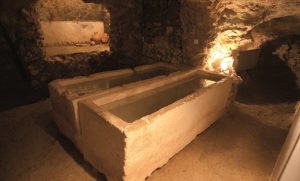 If besides the sea, the beaches and the by night you are interested in delving into the history of the island, well then the Necropolis of Puig des Molins is absolutely worth a visit. Ibiza, in fact, over the millennia has undergone several dominations. Undoubtedly the Arab one was the most significant, but before there were Phoenicians, Carthaginians and Romans. They were the first to build the catacombs a few hundred meters from the village where they had settled. At the time, the seventh century BC, the mills (hence the name of the location) were not yet there. In their place, above all fruit trees, while today both the mills and the remains of the tombs (it is estimated that they are more than 3000, of which about one tenth can be visited) are covered by a dense blanket of shrubs and Mediterranean scrub. To see the annexed Monographic Museum where the funeral items found during the archaeological excavations were found and cataloged. These are jewels, amulets, ceramics and other tools from which it is possible to obtain valuable information on the different status of the deceased buried.
If besides the sea, the beaches and the by night you are interested in delving into the history of the island, well then the Necropolis of Puig des Molins is absolutely worth a visit. Ibiza, in fact, over the millennia has undergone several dominations. Undoubtedly the Arab one was the most significant, but before there were Phoenicians, Carthaginians and Romans. They were the first to build the catacombs a few hundred meters from the village where they had settled. At the time, the seventh century BC, the mills (hence the name of the location) were not yet there. In their place, above all fruit trees, while today both the mills and the remains of the tombs (it is estimated that they are more than 3000, of which about one tenth can be visited) are covered by a dense blanket of shrubs and Mediterranean scrub. To see the annexed Monographic Museum where the funeral items found during the archaeological excavations were found and cataloged. These are jewels, amulets, ceramics and other tools from which it is possible to obtain valuable information on the different status of the deceased buried. - Es Cavallet
So far we have dealt with not flattening the image of Ibiza on its more hedonistic and transgressive side. Ignoring it, however, would be a mistake, especially since, once in place, it is still impossible to do it. Take Es Cavallet, one of the most beautiful beaches on the island. It is certainly worth going there, but you need to know that in addition to the environmental data - white beach, crystal clear sea etc. - Es Cavallet is famous for being Ibiza's official nudist beach. A record that dates back to the first half of the 70s of the last century when Spain was still under the political-military domination of General Francisco Franco. And, in fact, the Spanish regime tried to repress the phenomenon, but failed to eradicate it. Therefore, Es Cavallet is a piece of Spanish history, an example of freedom on which nudists, naturalists, gays and lesbians from all over the world came to Ibiza in the years of post-Francoism. The beach, which is part of the Ses Salines Nature Reserve, is located on the southern slope of Ibiza and is well connected by public transport from the capital Eivissa - Espalmador
Those who come to Ibiza almost always spend one day of their holiday in nearby Formentera. The connections from Sant Antoni and Eivissa are frequent and the journey is short. Obviously, despite being smaller and much less inhabited (about 11,000 inhabitants), Formentera does not turn in a single day, if only for the large amount of beaches available. The beaches to the north, on the Es Trucadors peninsula, are the most popular tourist ones: above all Illetes, but Llevant, Es Cavall and Espalmador (S'Espalmador, in Catalan) are also worth a visit. The latter is a small island (approx. 3 km long and 1 wide) 150 meters from the Es Trucador peninsula, but due to strong currents, swimming is prohibited. Therefore, once you arrive in Formentera, you have to take a boat that shuttles daily from the port of La Salina to Espalmador. Having said that, it is absolutely worth it. The feeling, walking on the white and fine sand of Platja de S'Alga (the islet beach), is to be in the Caribbean to which, moreover, this remote island in the middle of the Ses Salines Nature Reserve, does not really have nothing to envy. Highly recommended. - Westend
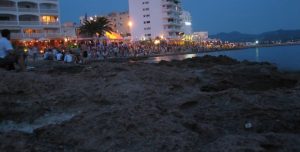 Ibizashares the same fate as Mykonos, that of being considered above all a "party island". An island, that is, where bpm, alcohol and transgression are to mark the days of the tourists present. And, in fact, it cannot be said that the stereotype does not reflect reality. Take the Westend, the local area of St. Antoni de Portmany, the second largest municipality on the island by extension and number of inhabitants (about 20,000). Those who cannot afford to enter the most expensive places in Eivissa come to have fun here on the southwestern side of the island. From May to October the Westend practically never sleeps: noise all day and clubs practically everywhere. It doesn't even make much sense to talk about nightlife anymore, since parties are held at any time of the day. In clubs, on the beach and even by boat. And yes, because in the port of St Antoni the "boat parties" are moored where from sunset onwards we go on with cocktails and ball music. Finally a tip: if you like sunsets don't forget to bring your camera: those of St. Antoni de Portmany, according to most, are the most beautiful in Ibiza.
Ibizashares the same fate as Mykonos, that of being considered above all a "party island". An island, that is, where bpm, alcohol and transgression are to mark the days of the tourists present. And, in fact, it cannot be said that the stereotype does not reflect reality. Take the Westend, the local area of St. Antoni de Portmany, the second largest municipality on the island by extension and number of inhabitants (about 20,000). Those who cannot afford to enter the most expensive places in Eivissa come to have fun here on the southwestern side of the island. From May to October the Westend practically never sleeps: noise all day and clubs practically everywhere. It doesn't even make much sense to talk about nightlife anymore, since parties are held at any time of the day. In clubs, on the beach and even by boat. And yes, because in the port of St Antoni the "boat parties" are moored where from sunset onwards we go on with cocktails and ball music. Finally a tip: if you like sunsets don't forget to bring your camera: those of St. Antoni de Portmany, according to most, are the most beautiful in Ibiza. - Cala Bassa
About 9 kilometers from St. Antony de Portmany there is the small (approx. 300 meters long) but suggestive Cala Bassa beach. The peculiarity of this inlet is that of having a pine forest behind it (for the large quantity of maritime pines, Ibiza and Formentera are also called "Pitiuse Islands") where, if you want, you can equip yourself with a bed and deckchair by doing without 'Beach umbrella. Obviously, in the pine forest behind there is no shortage of snack bars and restaurants, as well as a short-lived campsite chosen above all by families with children in tow. An advantageous formula that allows you to reconcile the proximity to the sea with a lower cost than staying in a hotel. To be seen! - Santa Agnés de Corona
After the beaches, the dirinks, the boat trips and the disco nights, those who want to know "the other Ibiza", the one far from the lights and excesses of worldliness, must necessarily visit Santa Agnés de Corona, a small rural village in the north of St. Antony de Portmany. A village of just 300 souls, where pastures, sheep and expanses of almond trees dominate the landscape, by far the most widespread crop in the area. Of course, tourism has also arrived here but, as reiterated at the beginning, it is a different tourism from what we are traditionally used to thinking about Ibiza. Santa Agnés de Corona borders with Sant Mateu D’Albarca, another rural settlement in which vines are grown in addition to almond trees. If you want, therefore, you can also extend your visit to Sant Mateu. Not to be missed! - Cala d’Hort
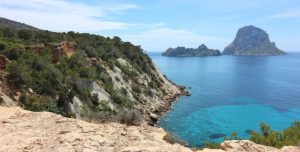 The last stretch of road to get to Cala d’Hort is not easy and sometimes it happens that there is no place in the parking lot above the beach. Among other things, the beach is not very large, just 200 meters long. So, one wonders, why is it one of the most popular in Ibiza? Certainly for the quality of the water, even if the sea in Ibiza is almost everywhere of excellent quality, and therefore the popularity of Cala d’Hort must be sought elsewhere. The real reason why tourists arrive here (23 kilometers from Ibiza, 11 from Sant Josep de Talaia) is the view of the three "Dragon Islands": Es Vedrà (see photo), Es Vedranell, Es (Sa) Galera . Especially Es Vedrà, a 382 meters high cliff whose vision, from a certain point onwards, represents a safe guide for motorists who are about to reach the location. As almost always happens in these cases, Es Vedrà is at the center of numerous stories: from the inevitable UFOs to the more famous one, according to which the island was inhabited by a giant squid greedy. Legend has it that, to appease his insatiable appetite, the titan kidnapped two young fishermen whose only reason for survival became that of satisfying the monster's requests. One day, however, one of the two had the intuition of mixing a hedgehog between the molluscs, a circumstance that provoked strong abdominal cramps to the giant allowing, on the other hand, the escape of the boys. Legends aside, the close-up view of Es Vedrà has a magnetic appeal, especially at sunset. It should not be forgotten, in fact, that Cala d’Hort is located on the western side of the island, and is therefore one of the most suitable places for those who love twilight atmospheres.
The last stretch of road to get to Cala d’Hort is not easy and sometimes it happens that there is no place in the parking lot above the beach. Among other things, the beach is not very large, just 200 meters long. So, one wonders, why is it one of the most popular in Ibiza? Certainly for the quality of the water, even if the sea in Ibiza is almost everywhere of excellent quality, and therefore the popularity of Cala d’Hort must be sought elsewhere. The real reason why tourists arrive here (23 kilometers from Ibiza, 11 from Sant Josep de Talaia) is the view of the three "Dragon Islands": Es Vedrà (see photo), Es Vedranell, Es (Sa) Galera . Especially Es Vedrà, a 382 meters high cliff whose vision, from a certain point onwards, represents a safe guide for motorists who are about to reach the location. As almost always happens in these cases, Es Vedrà is at the center of numerous stories: from the inevitable UFOs to the more famous one, according to which the island was inhabited by a giant squid greedy. Legend has it that, to appease his insatiable appetite, the titan kidnapped two young fishermen whose only reason for survival became that of satisfying the monster's requests. One day, however, one of the two had the intuition of mixing a hedgehog between the molluscs, a circumstance that provoked strong abdominal cramps to the giant allowing, on the other hand, the escape of the boys. Legends aside, the close-up view of Es Vedrà has a magnetic appeal, especially at sunset. It should not be forgotten, in fact, that Cala d’Hort is located on the western side of the island, and is therefore one of the most suitable places for those who love twilight atmospheres. - Cova de Can Marçà
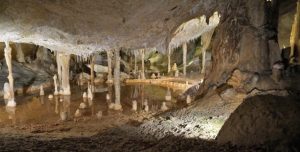 We have said it several times: Ibiza is not just nightlife. Worth a visit, for example, Cova de Can Marçà, a cave once used as a refuge by smugglers (the black and red signs used to find your way inside are still visible) and from the 80s of the last century transformed into a tourist attraction. The ravine is located near Port San Miquel, a small tourist resort about 20 km from Eivissa, St. Antoni and Sant’Eularia. Inside, games of lights, sounds and artificial waterfalls accompany tourists during the visit which lasts approximately 40 minutes (entrance fee € 10.50). Outside, however, bar with terrace and views of the bay of San Miquel. To be seen!
We have said it several times: Ibiza is not just nightlife. Worth a visit, for example, Cova de Can Marçà, a cave once used as a refuge by smugglers (the black and red signs used to find your way inside are still visible) and from the 80s of the last century transformed into a tourist attraction. The ravine is located near Port San Miquel, a small tourist resort about 20 km from Eivissa, St. Antoni and Sant’Eularia. Inside, games of lights, sounds and artificial waterfalls accompany tourists during the visit which lasts approximately 40 minutes (entrance fee € 10.50). Outside, however, bar with terrace and views of the bay of San Miquel. To be seen! - Cala de Sant Vincent
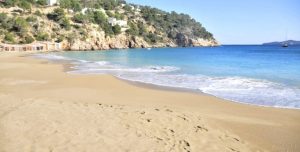 Last, but only for display reasons, Cala de Sant Vincent. We are about 30 kilometers from Eivissa, at the north eastern end of the island. It is here that you will probably find the most crystal clear waters of Ibiza, ideal for snorkeling or even just for a swim in the middle of the Mediterranean. Even the landscape all around is typically Mediterranean with the inevitable pine forests dominating the scene. In short, Cala de Sant Vincent is the right beach to spend a day of total relaxation. Obviously, there is no lack of equipped beaches, bars, restaurants, shops and all related activities normally associated with a seaside resort. To be seen.
Last, but only for display reasons, Cala de Sant Vincent. We are about 30 kilometers from Eivissa, at the north eastern end of the island. It is here that you will probably find the most crystal clear waters of Ibiza, ideal for snorkeling or even just for a swim in the middle of the Mediterranean. Even the landscape all around is typically Mediterranean with the inevitable pine forests dominating the scene. In short, Cala de Sant Vincent is the right beach to spend a day of total relaxation. Obviously, there is no lack of equipped beaches, bars, restaurants, shops and all related activities normally associated with a seaside resort. To be seen.
